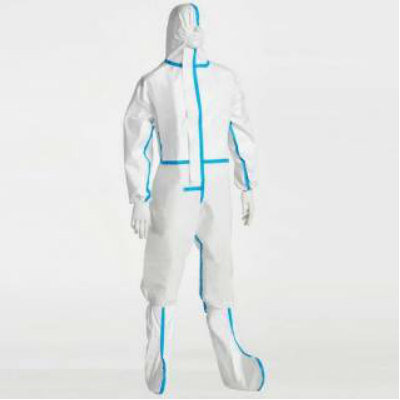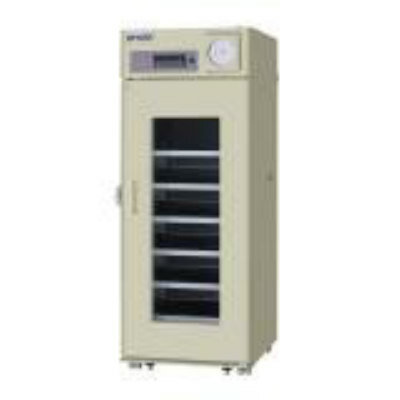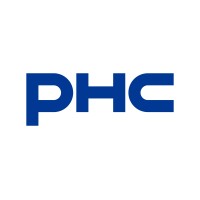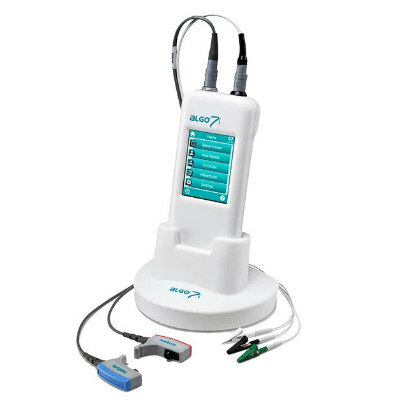Smart Hospital Beds Improve Accuracy of Medical Diagnosis
|
By HospiMedica International staff writers Posted on 17 Jan 2023 |

The global hospital bed market is expected to grow at a CAGR of 5.7% from USD 3.21 billion in 2021 to USD 4.69 billion by 2028, driven by the growing preference for highly equipped hospital beds with innovative features, with the increasing popularity of smart hospital beds emerging as a key trend in the market.
These are the latest findings of ReportLinker (Lyon, France), a tech company that uses artificial intelligence to deliver market data and forecasts.
During hospitalization, continuous patient monitoring is vital for risk identification, and early diagnosis and treatment in order to reduce mortality and morbidity, as well as hospitalization costs. A patient’s medical condition limits the ability to change positions in bed, resulting in bedsores due to most of their time being spent in the bed. Bedsores are categorized in several stages depending on their depth, severity, and other characteristics such as the extent of damage to the skin and tissue, ranging from changes in skin color to severe injury involving the muscle and bone. There is high demand for equipped, facilitated beds that can help prevent physiological complications among patients, such as bedsores or falling from the bed that can be harmful for them.
The development of information technology (IT) in healthcare, i.e., healthcare IT-based medical equipment like smart hospital beds, that use wireless sensor networks (WSNs), offers an easy and quick solution to prevent bedsores in motionless and disabled patients. Pressure ulcers or bedsores can be prevented through timely, accurate mapping of pressure points for inhibiting tissue perfusion, which can cause a patient’s death. Smart hospital beds incorporated with advanced technologies feature highly developed embedded control functions and interactivity. Such beds support new functionalities like continuous monitoring of patients’ vital signs, thereby preventing them from falling off the bed and developing pressure ulcers.
In addition, using simple applications (apps), hospital beds have been transformed into highly-networked appliances, which are categorized as Class 2 Medical Devices seeking electronic intelligence. For instance, modern hospital beds feature a monitor screen that displays the health status of patients and allows for remote transmission of data to the nurse station. They also feature other modules such as tilt accelerometers and motor drives for controlling the tilt of the bed, powered wheels for facilitating the patient’s transportation to different areas of the hospital, USB and Ethernet ports to aid in connectivity with PC or hospital network, and LCD screen and keypad for the user interface, that allow healthcare providers to offer comfort to the patients.
Based on type, the semi-electric beds segment accounted for the largest share of the global hospital bed market in 2021 and is expected to register the highest CAGR from 2022 to 2028. Based on usage, the acute-care beds segment led the global hospital bed market in 2021 and is expected to maintain its dominance during the forecast period. Based on application, the non-intensive care beds segment accounted for the largest share of the global hospital bed market in 2021 and is expected to maintain its dominance during the forecast period. Geographically, Europe holds the largest share of the global hospital bed market, driven by its increasing geriatric population and growing prevalence of chronic diseases. The hospital bed market in Asia Pacific is expected to register the highest CAGR during the forecast period, led by the accelerated economic growth of countries such as China and Japan, increasing focus of governments in these countries on the healthcare sector, rising prevalence of chronic diseases, and higher investment from government bodies for the expansion of healthcare facilities amid the COVID-19 pandemic along with favorable regulatory reforms.
Latest Patient Care News
- Surgical Capacity Optimization Solution Helps Hospitals Boost OR Utilization

- Game-Changing Innovation in Surgical Instrument Sterilization Significantly Improves OR Throughput
- Next Gen ICU Bed to Help Address Complex Critical Care Needs
- Groundbreaking AI-Powered UV-C Disinfection Technology Redefines Infection Control Landscape
- Clean Hospitals Can Reduce Antibiotic Resistance, Save Lives
- New Fast Endoscope Drying System Improves Productivity and Traceability
- World’s First Automated Endoscope Cleaner Fights Antimicrobial Resistance
- Portable High-Capacity Digital Stretcher Scales Provide Precision Weighing for Patients in ER
- Portable Clinical Scale with Remote Indicator Allows for Flexible Patient Weighing Use
- Innovative and Highly Customizable Medical Carts Offer Unlimited Configuration Possibilities
- Biomolecular Wound Healing Film Adheres to Sensitive Tissue and Releases Active Ingredients
- Wearable Health Tech Could Measure Gases Released From Skin to Monitor Metabolic Diseases
- Wearable Cardioverter Defibrillator System Protects Patients at Risk of Sudden Cardiac Arrest
- World's First AI-Ready Infrasound Stethoscope Listens to Bodily Sounds Not Audible to Human Ear
- POC Diagnostic Platform Offers Handheld, Instrument-Free PCR Testing for STIs
- World's First Robotic Clinical Assistant for Hospitalized Patient Care Launched
Channels
Artificial Intelligence
view channel
AI-Powered Algorithm to Revolutionize Detection of Atrial Fibrillation
Atrial fibrillation (AFib), a condition characterized by an irregular and often rapid heart rate, is linked to increased risks of stroke and heart failure. This is because the irregular heartbeat in AFib... Read more
AI Diagnostic Tool Accurately Detects Valvular Disorders Often Missed by Doctors
Doctors generally use stethoscopes to listen for the characteristic lub-dub sounds made by heart valves opening and closing. They also listen for less prominent sounds that indicate problems with these valves.... Read moreCritical Care
view channel
Deep-Learning Model Predicts Arrhythmia 30 Minutes before Onset
Atrial fibrillation, the most common type of cardiac arrhythmia worldwide, affected approximately 59 million people in 2019. Characterized by an irregular and often rapid heart rate, atrial fibrillation... Read more
Breakthrough Technology Combines Detection and Treatment of Nerve-Related Disorders in Single Procedure
The peripheral nervous system (PNS) serves as the communication network that links the brain and spinal cord to every other part of the body. It consists of two parts: the somatic nervous system, which... Read moreSurgical Techniques
view channel
Hydrogel-Based Miniaturized Electric Generators to Power Biomedical Devices
The development of engineered devices that can harvest and convert the mechanical motion of the human body into electricity is essential for powering bioelectronic devices. This mechanoelectrical energy... Read moreWearable Technology Monitors and Analyzes Surgeons' Posture during Long Surgical Procedures
The physical strain associated with the static postures maintained by neurosurgeons during long operations can lead to fatigue and musculoskeletal problems. An objective assessment of surgical ergonomics... Read more.jpg)
Custom 3D-Printed Orthopedic Implants Transform Joint Replacement Surgery
The evolving field of 3D printing is revolutionizing orthopedics, especially for individuals requiring joint replacement surgeries where traditional implants fail to provide a solution. Although most people... Read more
Cutting-Edge Imaging Platform Detects Residual Breast Cancer Missed During Lumpectomy Surgery
Breast cancer is becoming increasingly common, with statistics indicating that 1 in 8 women will develop the disease in their lifetime. Lumpectomy remains the predominant surgical intervention for treating... Read moreHealth IT
view channel
Machine Learning Model Improves Mortality Risk Prediction for Cardiac Surgery Patients
Machine learning algorithms have been deployed to create predictive models in various medical fields, with some demonstrating improved outcomes compared to their standard-of-care counterparts.... Read more
Strategic Collaboration to Develop and Integrate Generative AI into Healthcare
Top industry experts have underscored the immediate requirement for healthcare systems and hospitals to respond to severe cost and margin pressures. Close to half of U.S. hospitals ended 2022 in the red... Read more
AI-Enabled Operating Rooms Solution Helps Hospitals Maximize Utilization and Unlock Capacity
For healthcare organizations, optimizing operating room (OR) utilization during prime time hours is a complex challenge. Surgeons and clinics face difficulties in finding available slots for booking cases,... Read more
AI Predicts Pancreatic Cancer Three Years before Diagnosis from Patients’ Medical Records
Screening for common cancers like breast, cervix, and prostate cancer relies on relatively simple and highly effective techniques, such as mammograms, Pap smears, and blood tests. These methods have revolutionized... Read morePoint of Care
view channel
Critical Bleeding Management System to Help Hospitals Further Standardize Viscoelastic Testing
Surgical procedures are often accompanied by significant blood loss and the subsequent high likelihood of the need for allogeneic blood transfusions. These transfusions, while critical, are linked to various... Read more
Point of Care HIV Test Enables Early Infection Diagnosis for Infants
Early diagnosis and initiation of treatment are crucial for the survival of infants infected with HIV (human immunodeficiency virus). Without treatment, approximately 50% of infants who acquire HIV during... Read more
Whole Blood Rapid Test Aids Assessment of Concussion at Patient's Bedside
In the United States annually, approximately five million individuals seek emergency department care for traumatic brain injuries (TBIs), yet over half of those suspecting a concussion may never get it checked.... Read more
New Generation Glucose Hospital Meter System Ensures Accurate, Interference-Free and Safe Use
A new generation glucose hospital meter system now comes with several features that make hospital glucose testing easier and more secure while continuing to offer accuracy, freedom from interference, and... Read moreBusiness
view channel
Johnson & Johnson Acquires Cardiovascular Medical Device Company Shockwave Medical
Johnson & Johnson (New Brunswick, N.J., USA) and Shockwave Medical (Santa Clara, CA, USA) have entered into a definitive agreement under which Johnson & Johnson will acquire all of Shockwave’s... Read more
















